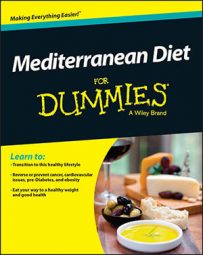Olive oil is the magic elixir of the Mediterranean diet. Although Western diets feature hydrogenated oils and saturated fats from animal sources, olive oil — the staple of Mediterranean cuisine — is rich in plant-based monounsaturated fatty acids that are chockfull of heart health benefits. Making the swap to a Mediterranean-based diet and incorporating olive oil can improve your health without compromising on flavor that other fat sources add to your meals.
Types of olive oils and how to use them
All olive oil is not created equal. Many factors impact the oil's taste, color, and aroma, resulting in hundreds of different varieties: type of olive; growing conditions (location, soil, environment, and weather) of the olive tree; how and when the olives were harvested and how much time passed between harvest and pressing; and the method by which olives are pressed, stored, and packaged for sale. All the different varieties fall into the following general categories:
-
Extra-virgin olive oil: Extra-virgin olive oil is the finest of the oils with the least acidity (no more than 1 percent acidity), and they can be a pale yellow to bright green color. The deeper the golden color, the more intense the fruity flavor.
Because of its superior flavor and aroma, use this oil as a dip for bread, over salads, or as a condiment in uncooked dishes.
When purchasing extra virgin olive oil, choose a bottle with dark glass and store it in a cool, dry place. Doing so helps prevent oxidation of the oil, which alters its chemical composition, and optimizes its shelf-life.
-
Fino (fine) oils: Fine oil is usually a combination of extra virgin and virgin olive oils, and its level can't exceed 1.5 percent. This kind of oil is good for both cooking and using straight up.
-
Virgin: The virgin oils have acidity levels between 1 and 3 percent and have enough flavor to be enjoyed uncooked but are typically used in cooking.
-
Light oil: The "light" designation doesn't refer to the oil's fat content; it refers to its lighter color and flavoring. Light olive oil has the same amount of calories and fat as any of the oils but has undergone filtration after the first press to remove most of the flavor and coloring, making light oil a good choice to use for baking and cooking when the olive oil flavoring isn't desirable.
-
Refined oils: When heat and chemical processes come into play to refine oils further, they lose the title virgin. This extra processing can happen if virgin oils have too high an acidity, poor flavor, or poor aroma. Processing into refined oils renders them flavorless, odorless, and colorless, which gives them a longer shelf-life. Use refined oils in combination with virgin olive oils when cooking.
Getting the correct amount of olive oil in your diet
On the Mediterranean diet, about 30-40 percent of your calories come from fat, including olive oil and other sources like fatty fish, nuts, seeds, and avocado, to name a few. The following table gives you an example of how many fat grams you should eat daily, based on the total number of calories you consume per day. The amount of fat grams from olive oil equate to about half of your fat needs.
| Calories Per Day | Total Grams of Fat Per Day | Suggested Amount of Fat Grams from Olive Oil |
|---|---|---|
| 1,500 | 58 | 28 grams (2 tablespoons) |
| 1,800 | 70 | 35 grams (2–3 tablespoons) |
| 2,100 | 82 | 42 grams (3 tablespoons) |
| 2,400 | 93 | 49 grams (3–4 tablespoons) |
Although you need a certain amount of fat in your diet, getting too much contributes excess calories. And when you're eating more calories than your body needs or can use for energy, those calories can get stored as fat.
Making infused olive oil
Herb or spice-infused olive oils typically carry a hefty price tag. Why not make your own at home to add a more robust flavor to your meals? Choose whatever fresh or dried herbs and spices you like, such as basil and garlic, or rosemary and red pepper, and then follow these steps:
-
Wash and pat any fresh herbs dry; then combine then with any other spices or dried herbs you want to include.
-
Pour the oil into a saucepan and warm over low heat.
-
As the oil warms, place the herb-and-spice mixture into a decorative bottle. Pour the warm oil over them and cover with a tight lid.
-
Place the bottle in a cool, dark place for a week.
If you are using garlic, store the bottle in the refrigerator to prevent food-borne illness.
-
Strain the oil, removing and discarding the herbs and spices.
Use the olive oil within one week. If you notice the oil begins to change color, discard immediately.

